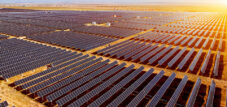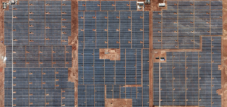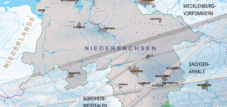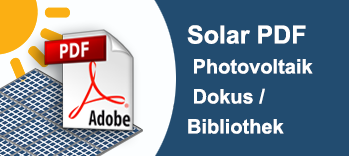Solar parks – gains for biological diversity
Language selection 📢
Published on: August 1, 2020 / Update from: September 28, 2020 - Author: Konrad Wolfenstein
2A study commissioned by the Federal Association of the New Energy Industry (bne) comes to the conclusion that solar parks have a positive effect on biodiversity.
The aim of the study was to show whether and to what extent solar parks can contribute to floristic and faunal biodiversity.
For this purpose, documents on the vegetation and fauna of 75 solar parks in Germany were evaluated. However, the studies and investigations available for the parks, which are spread across 9 federal states, were mostly carried out during the parks' approval phases and are very heterogeneous. Nevertheless, documents from almost 40% of the solar parks eligible for the assessment could be used. Intensive studies are also available for some parks, some comparing the federal states before and after, so that meaningful conclusions can be drawn. From this it can be deduced that solar parks generally have a positive effect on biodiversity and which structures can contribute to increasing biodiversity, especially with regard to the distance between the rows of modules and maintaining the distances between the rows.
In addition to an evaluation of the corresponding documentation with regard to the characteristics of the vegetation and the settlement of the parks with different animal groups, this study describes some parks in more detail as examples. Finally, information is provided about the content, structure and scope of future monitoring studies. One goal of such monitoring could be to develop uniform minimum standards for the construction of solar parks in the medium term.
The most important results of the evaluation of the available documents are:
- The use of land for solar parks is fundamentally positive because, in addition to its contribution to climate protection through the production of renewable energies, it can also lead to an increase in the value of the land in terms of preserving biological diversity.
- The use of areas for solar systems can have a significantly positive effect on biodiversity if they are designed to be nature-friendly.
- One of the main reasons for the species-rich population of solar parks with enough individuals from different animal groups is the long-term extensive use or maintenance of grassland in the intermediate rows. This means that these locations differ significantly from locations used intensively for agriculture or locations for generating energy from biomass.
- Solar farms can promote biodiversity compared to the surrounding landscape. This is evidenced in the available documents for butterflies, grasshoppers and breeding birds.
- There is sometimes a clear difference between solar farms with wide and narrow row spacing. Wider sun strips between the rows of modules increase the density of species and individuals. This is documented in the colonization by insects, reptiles and breeding birds. This was particularly clearly demonstrated in the sand lizard.
- The analysis of the documents also shows a possible trend in the different importance of small systems compared to large systems: While smaller systems act as stepping stone biotopes and can thus maintain or restore habitat corridors, large systems - with appropriate care - can create sufficiently large habitats enable the preservation or establishment of populations, for example of sand lizards or breeding birds.
- Solar farms on conversion sites can help halt vegetation succession that leads to the loss of open, sunny habitats.
- Further investigation is required. In particular, the settlement of the solar parks is often not monitored after the systems have been built. However, it can clarify the importance of solar parks for the density of species and individuals of different animal groups.
Suitable for:


























